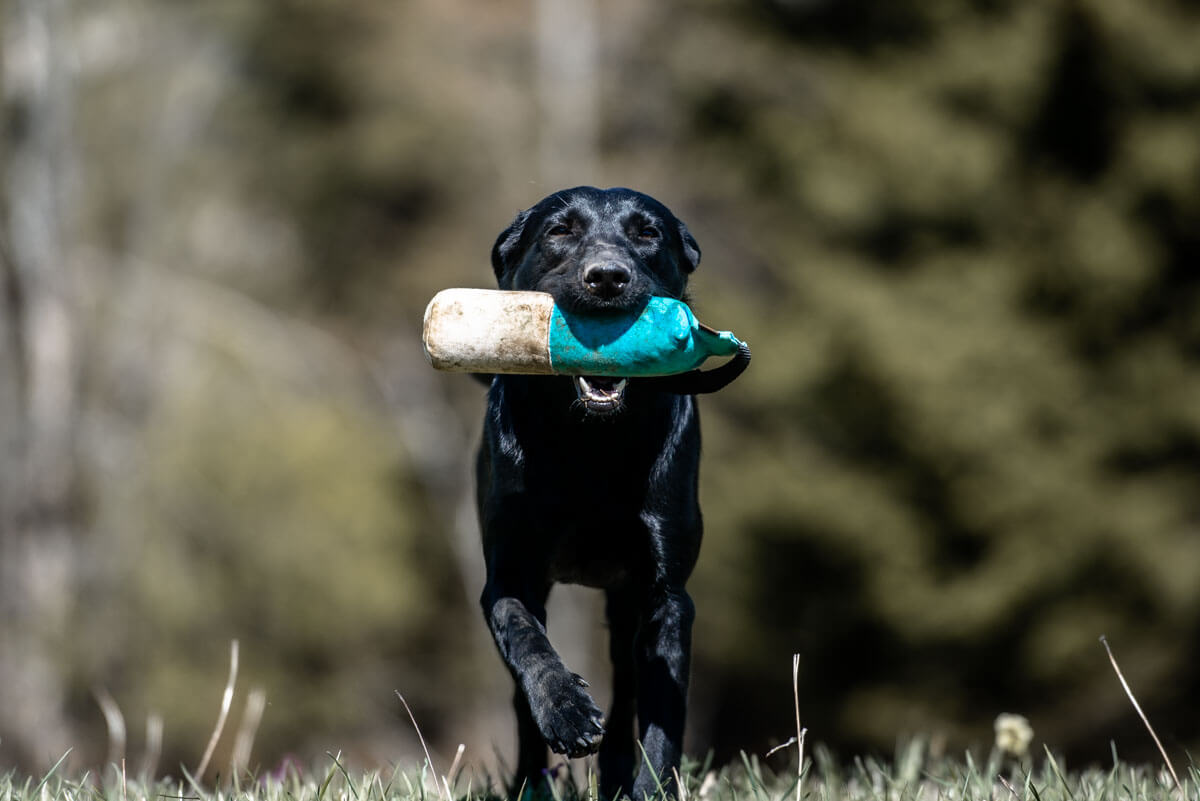Labrador Retrievers are everywhere — parks, backyards, duck blinds, dog shows, family portraits. And it’s no surprise. They’re one of the most popular breeds in the world for good reason: Labs are smart, loyal, goofy, and people-oriented. They’re often praised as “easy dogs.”
But here’s the catch no one tells you: just because they’re easy to love doesn’t mean they’re easy to raise. A Labrador’s nature is wired for work, and if you ignore what they were built for, you’re asking for trouble.
Labrador Retriever Origins: Why They’re Built to Work
To understand a Lab, you have to start with where they came from. They were originally bred in Newfoundland as fisherman’s helpers — strong swimmers who could haul nets, retrieve fish, and swim through icy water. Later, in the UK, they were refined into elite gundogs, prized for their soft mouths, keen noses, and focus in the field.
That working legacy runs deep. Even today’s pet-bred Labs come with high energy, a strong retrieve drive, and a need to be mentally engaged. They’re not decorative dogs. They’re doers.

Training Isn’t Optional — It’s Survival
People often assume Labs are naturally obedient. In reality, they’re naturally enthusiastic. What makes them trainable is their motivation to please, but that needs direction. If you don’t give them guidance, structure, and purpose, they’ll become chaotic fast.
A Lab without training is a tornado with paws: jumping, mouthing, pulling, barking, chewing, digging. Not because they’re bad dogs — because they’re under-stimulated and under-led.
Training isn’t about suppressing their instincts. It’s about shaping them. And more importantly, it’s about giving your Lab the tools to live in your world — a world full of rules they didn’t ask for but have to learn.
Give Them a Job, or They’ll Invent One
So what does “fulfillment” actually mean for a Labrador? It means turning that drive into something constructive.
Here are just a few jobs that suit a Lab’s natural instincts:
- Retrieving games: Use bumpers or toys and teach structured fetch with rules. This isn’t just fetch-until-they-collapse — it’s cue-based retrieval, with impulse control and returns.
- Scent work: Labs have powerful noses. Hide treats or toys, teach basic nosework games, or level up to scent detection classes.
- Gundog-style training: Even if you don’t hunt, you can mimic the routines. Heel work, steadiness drills, directionals — it all builds focus and discipline.
- Canine sports: Labs often excel in agility, dock diving, rally obedience, and even tracking or search and rescue.
- Service work or therapy: Labs who are calm and stable can make excellent service dogs, therapy dogs, or school mascots — but that still requires months of structured work and socialization.
Giving your Lab a job doesn’t have to mean quitting your day job and becoming a dog handler. It just means creating daily routines that give them purpose. A five-minute training session, a structured walk, a brain game — it all adds up.

The Social Butterfly Problem
Labradors have another trait that’s both endearing and exhausting: they think everyone is their friend. Dogs, people, squirrels, leaves blowing in the wind — it’s all exciting.
This can be a challenge in the real world. A 70-pound dog launching at every stranger isn’t cute — it’s dangerous. That’s why socialization and impulse control are critical.
From day one, Labs need exposure to different environments, people, animals, sounds, and textures. But not just exposure — they need guidance. Teach them that calm behavior gets access to fun, and overstimulation means the party stops. Help them learn how to cope with excitement, not just experience it.
You Can’t Train the Lab Out — But You Can Build on It
Trying to “calm down” a Lab by ignoring their instincts is like trying to keep a fire from burning by smothering it with more wood. It backfires.
Instead of fighting the breed, lean into what makes them great: their energy, their smarts, their heart. Channel it. Shape it. Teach them how to live in your world, while honoring what they were born to do.
Because when a Lab is fulfilled — mentally and physically — they’re one of the most incredible companions you’ll ever have. But it doesn’t happen by accident. It happens when you stop expecting them to behave like easy pets, and start treating them like what they really are: athletes, workers, teammates, and friends.



